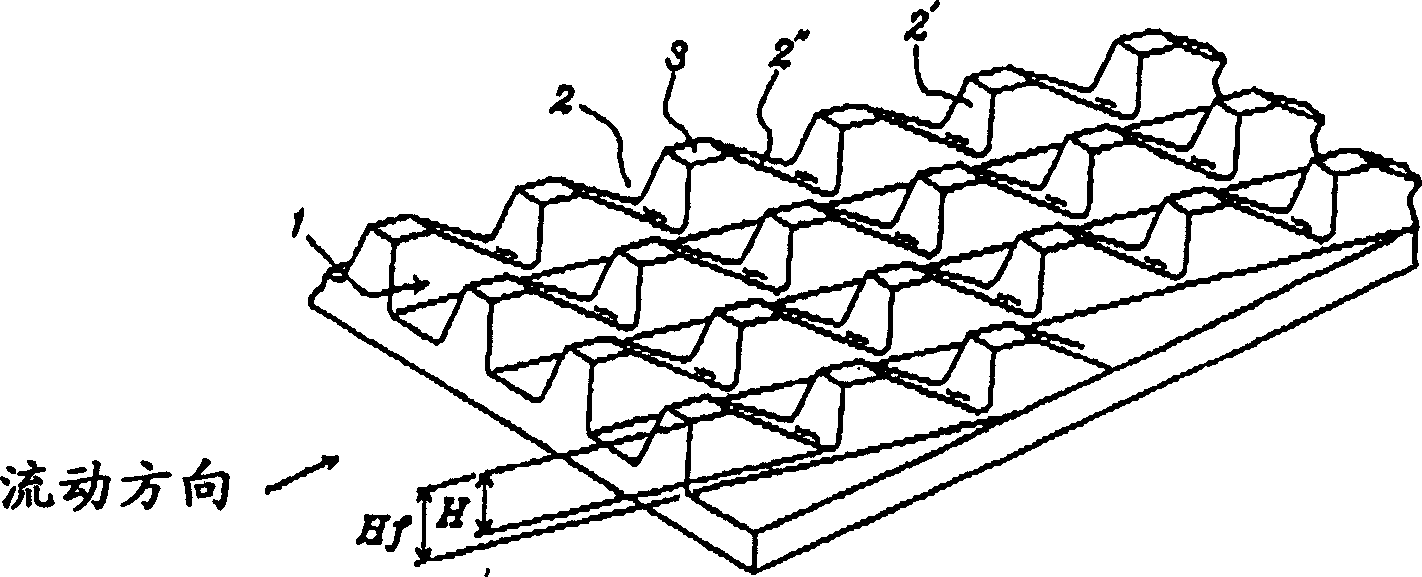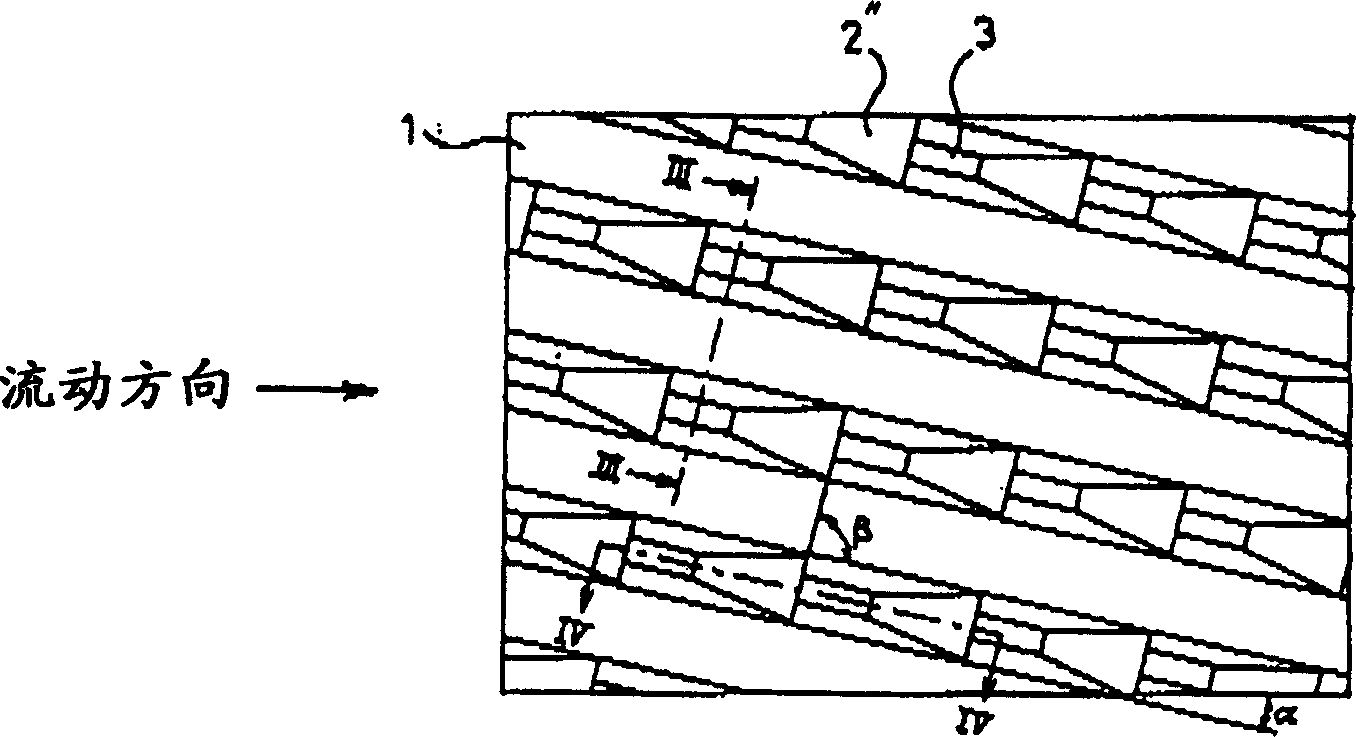Heat transter tube with cross-groove and method of manufacturing same thereof
A manufacturing method, technology of heat transfer tubes, applied in the direction of tubular elements, metal rolling, heat exchange equipment, etc.
- Summary
- Abstract
- Description
- Claims
- Application Information
AI Technical Summary
Problems solved by technology
Method used
Image
Examples
Embodiment Construction
[0027] Hereinafter, embodiments of the present invention will be described in detail with reference to the drawings.
[0028] The heat transfer tube with intersecting grooves of the present invention is a metal tube with a circular cross section, and a plurality of helical grooves 1 are formed on the entire inner surface of the tube. These helical grooves 1 are parallel to each other and form a certain helical angle relative to the longitudinal axis of the tube. alpha. Such as image 3 As shown, the cross-sectional shape of the helical groove 1 is an inverted trapezoid. In addition, the above-mentioned heat transfer tube with intersecting grooves is also equipped with a plurality of auxiliary grooves 2, and these auxiliary grooves 2 are parallel to each other and intersect with the helical groove 1 at a certain angle β. Such as Figure 4 As shown, the cross-sectional shape of the auxiliary groove is basically a right triangle, and has a helix angle larger than that of the h...
PUM
 Login to View More
Login to View More Abstract
Description
Claims
Application Information
 Login to View More
Login to View More - R&D
- Intellectual Property
- Life Sciences
- Materials
- Tech Scout
- Unparalleled Data Quality
- Higher Quality Content
- 60% Fewer Hallucinations
Browse by: Latest US Patents, China's latest patents, Technical Efficacy Thesaurus, Application Domain, Technology Topic, Popular Technical Reports.
© 2025 PatSnap. All rights reserved.Legal|Privacy policy|Modern Slavery Act Transparency Statement|Sitemap|About US| Contact US: help@patsnap.com



